Class 10 Exam > Class 10 Notes > Social Studies (SST) Class 10 > Map: Minerals and Energy Resources
Map: Minerals and Energy Resources | Social Studies (SST) Class 10 PDF Download
A. Iron Ore mines
- Mayurbhanj
- Durg
- Bailadila
- Bellary
- Kudremukh
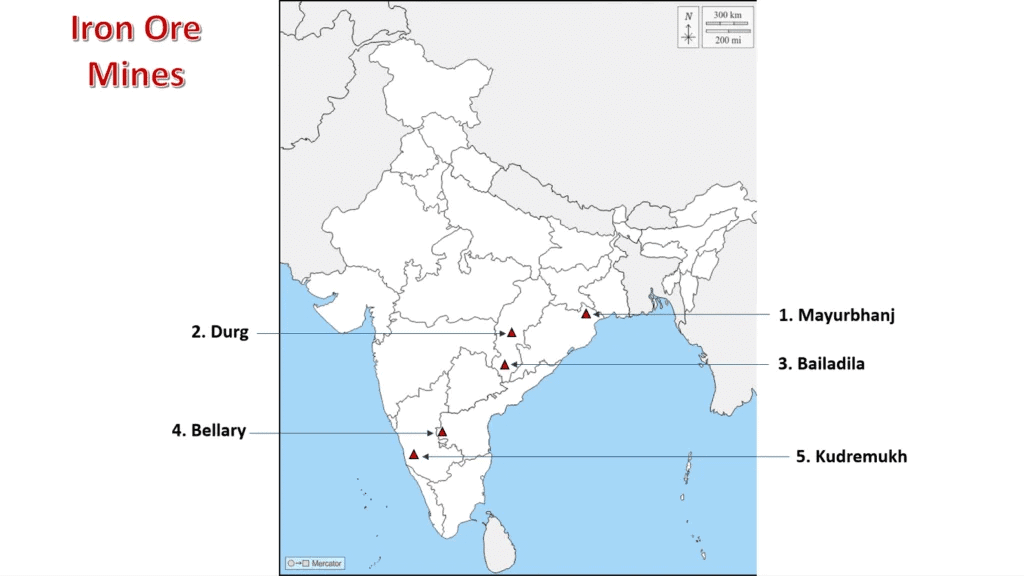
B. Coal Mines
- Raniganj
- Bokaro
- Talcher
- Neyveli
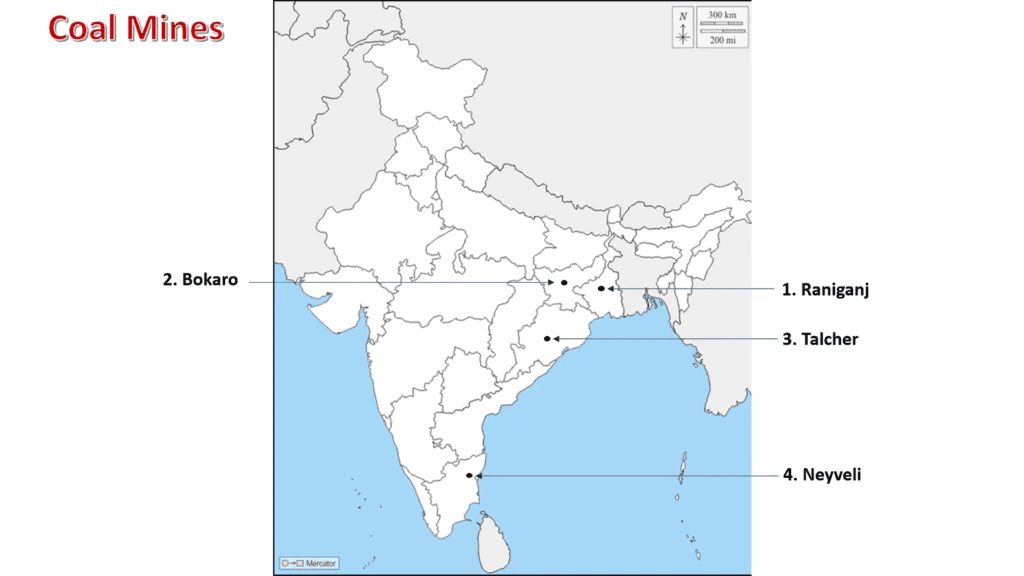
C. Oil Fields:
- Digboi
- Naharkatia
- Mumbai High
- Bassien
- Kalol
- Ankleshwar
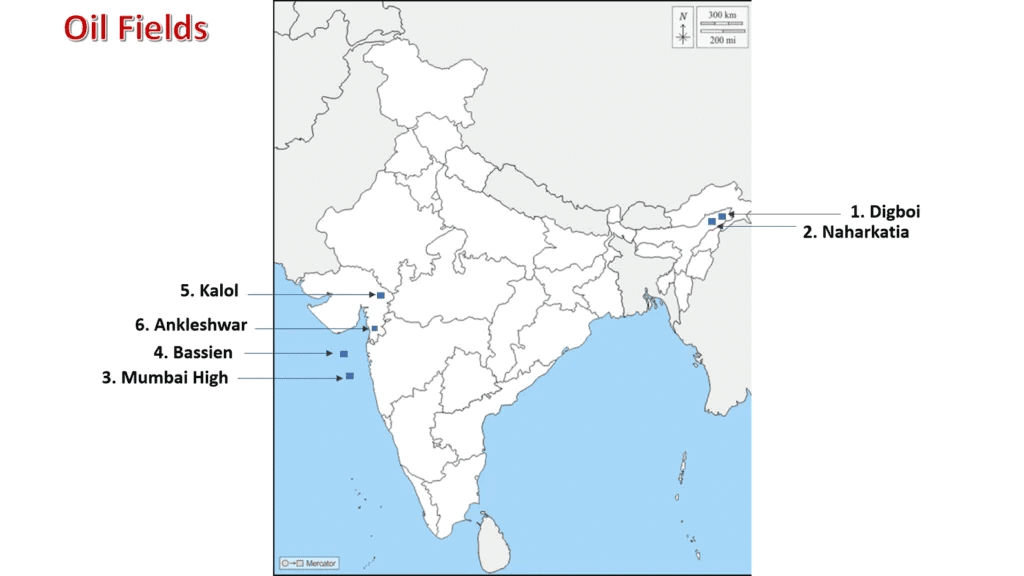
Power Plants (Locating and Labelling only)
A. Thermal
- Namrup
- Singrauli
- Ramagundam
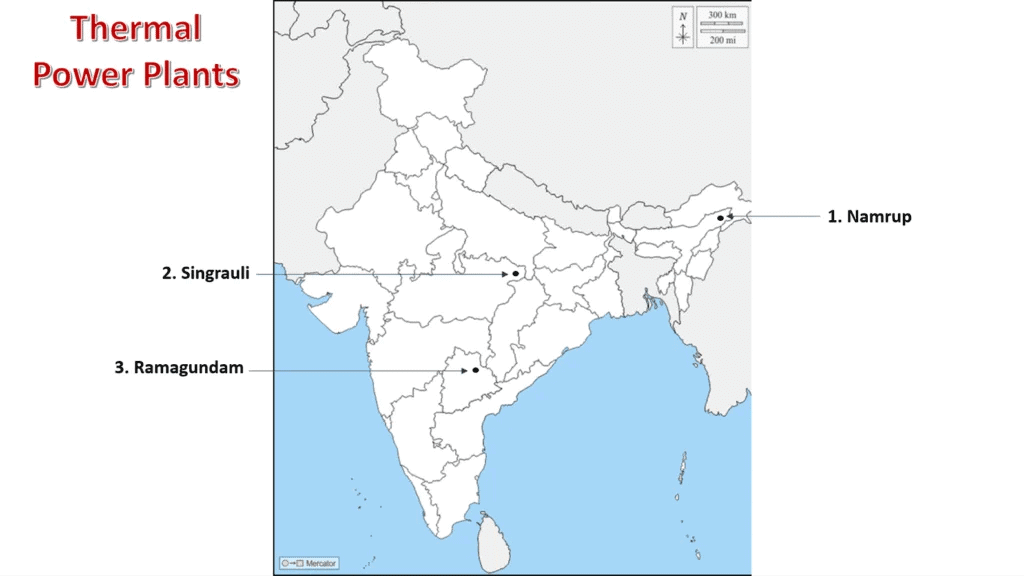
B. Nuclear
- Narora
- Kakrapara
- Tarapur
- Kalpakkam
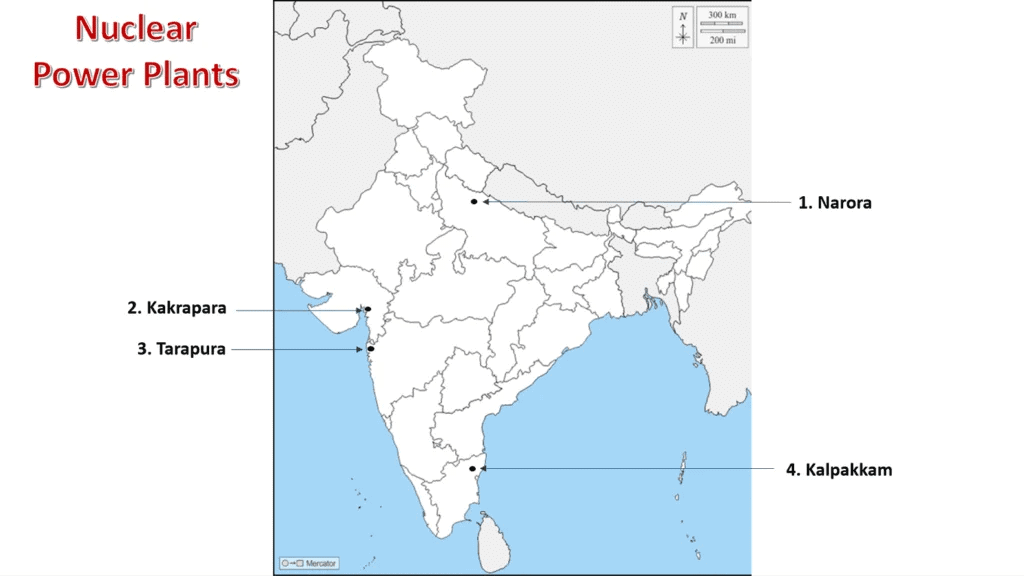
The document Map: Minerals and Energy Resources | Social Studies (SST) Class 10 is a part of the Class 10 Course Social Studies (SST) Class 10.
All you need of Class 10 at this link: Class 10
|
66 videos|614 docs|79 tests
|
FAQs on Map: Minerals and Energy Resources - Social Studies (SST) Class 10
| 1. What are the main types of minerals and energy resources studied in Class 10? |  |
Ans. In Class 10, students learn about various minerals such as metallic minerals (like iron ore, copper, and bauxite) and non-metallic minerals (like limestone and mica). Additionally, energy resources such as fossil fuels (coal, petroleum, and natural gas), renewable energy sources (solar, wind, and hydro), and nuclear energy are also covered.
| 2. How do minerals and energy resources impact the economy? |  |
Ans. Minerals and energy resources are crucial for economic development as they provide raw materials for industries, generate employment, and contribute to national income. The mining and energy sectors can drive infrastructure development and improve living standards, making them vital components of a country's economy.
| 3. What are the environmental impacts of mining minerals? |  |
Ans. Mining activities can lead to several environmental issues, including deforestation, soil erosion, water pollution, and loss of biodiversity. The extraction process can disrupt ecosystems, and improper waste disposal can contaminate local water sources, affecting both wildlife and human populations.
| 4. Why is renewable energy important in the context of energy resources? |  |
Ans. Renewable energy is essential because it provides a sustainable alternative to fossil fuels, which are finite and contribute to environmental pollution and climate change. Renewable sources, such as solar, wind, and hydro power, offer cleaner energy options that reduce greenhouse gas emissions and promote energy independence.
| 5. How can students prepare for their exams on minerals and energy resources? |  |
Ans. Students can prepare for exams by reviewing their class notes, understanding key concepts and definitions, practicing previous years' question papers, and engaging in group study sessions. Additionally, using visual aids like charts and maps can help in retaining information related to the distribution and importance of various minerals and energy resources.
Related Searches

















